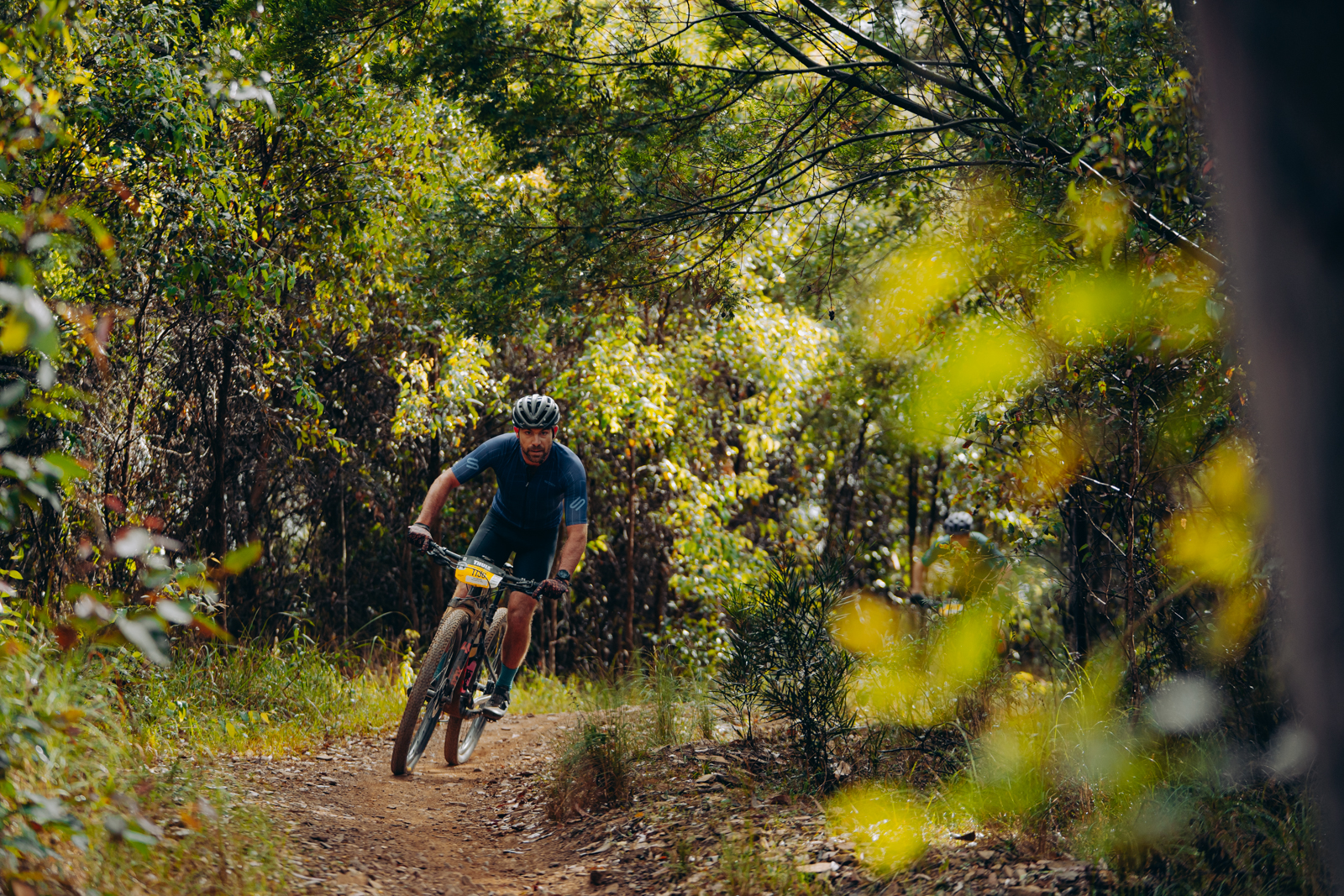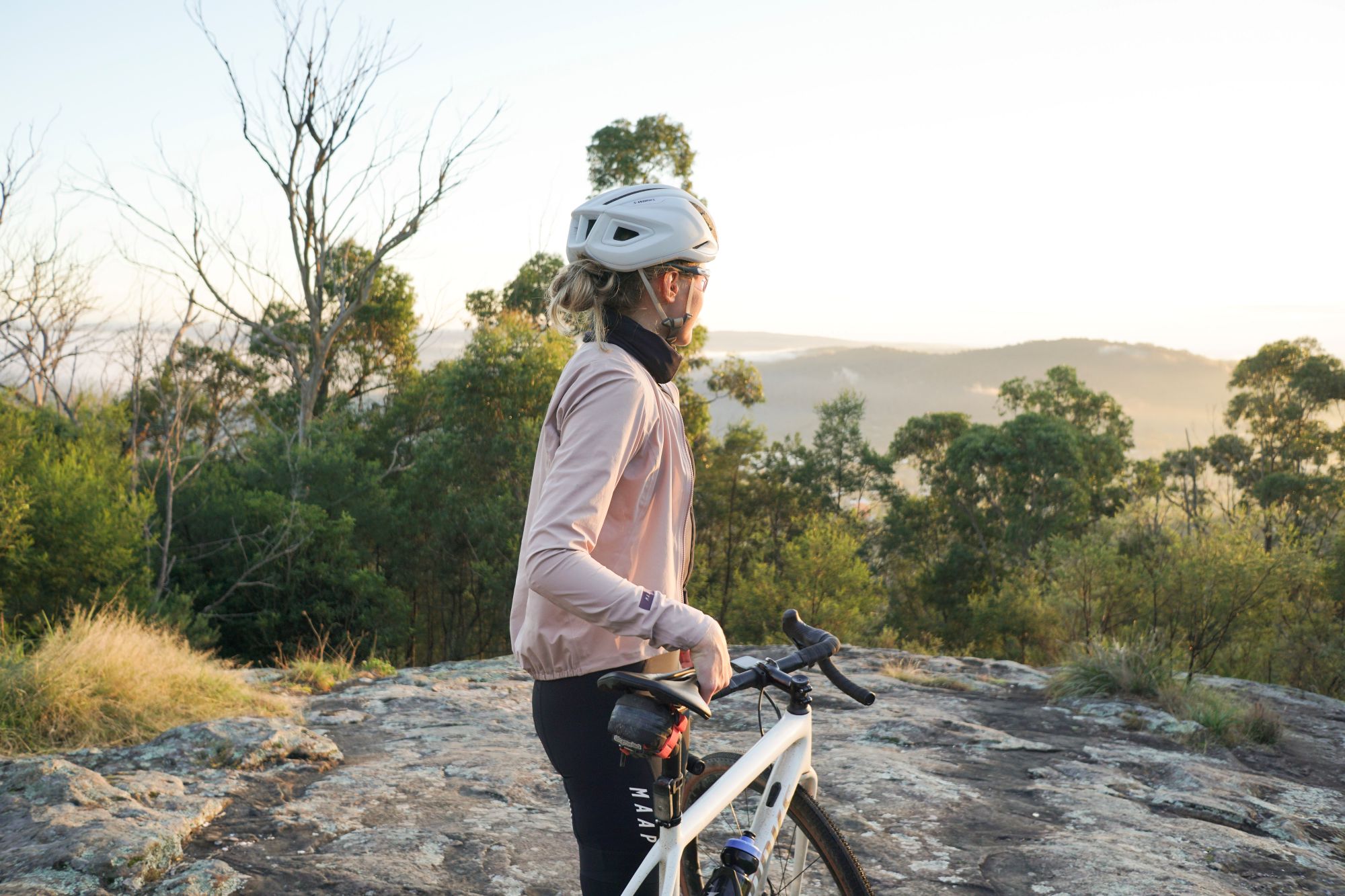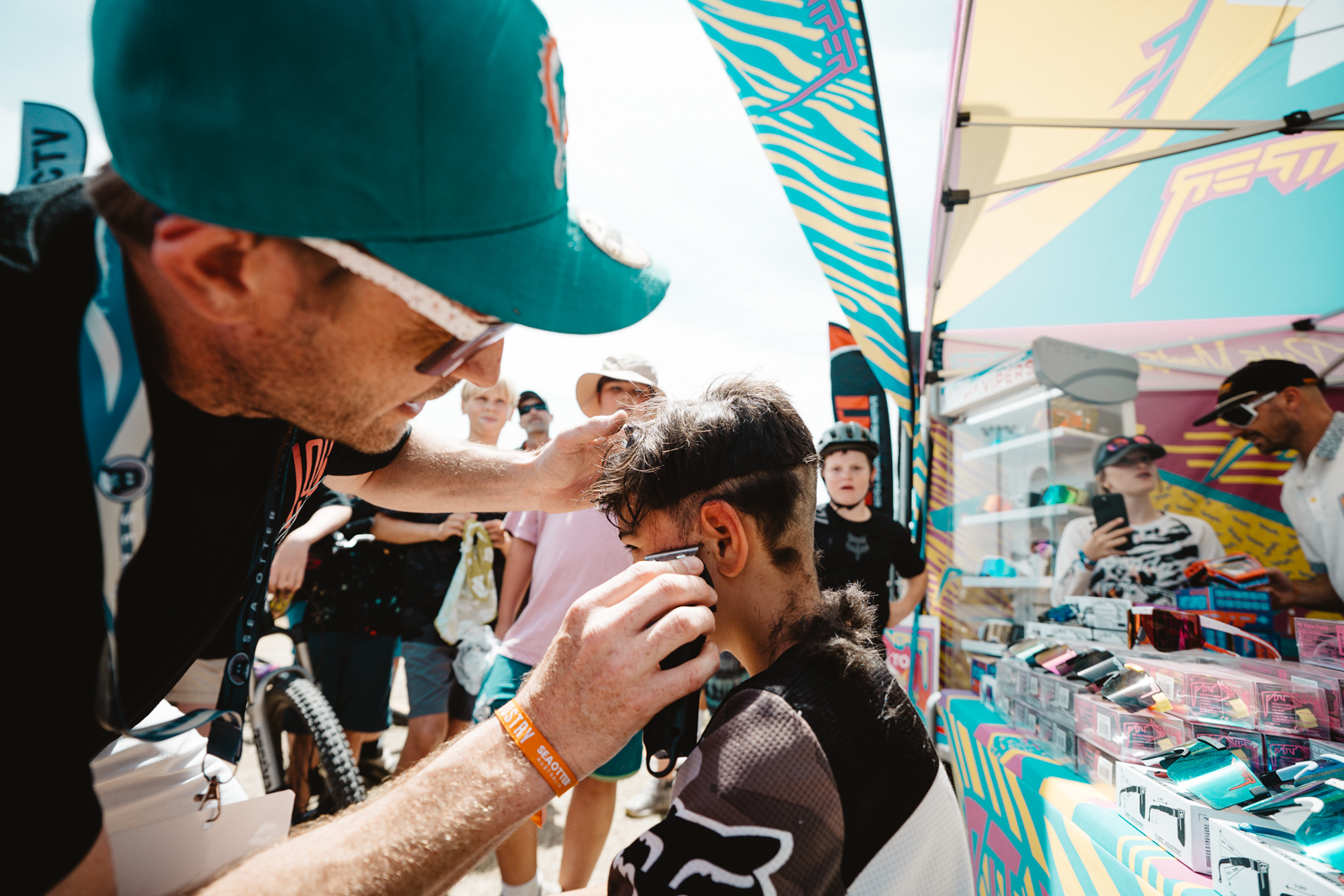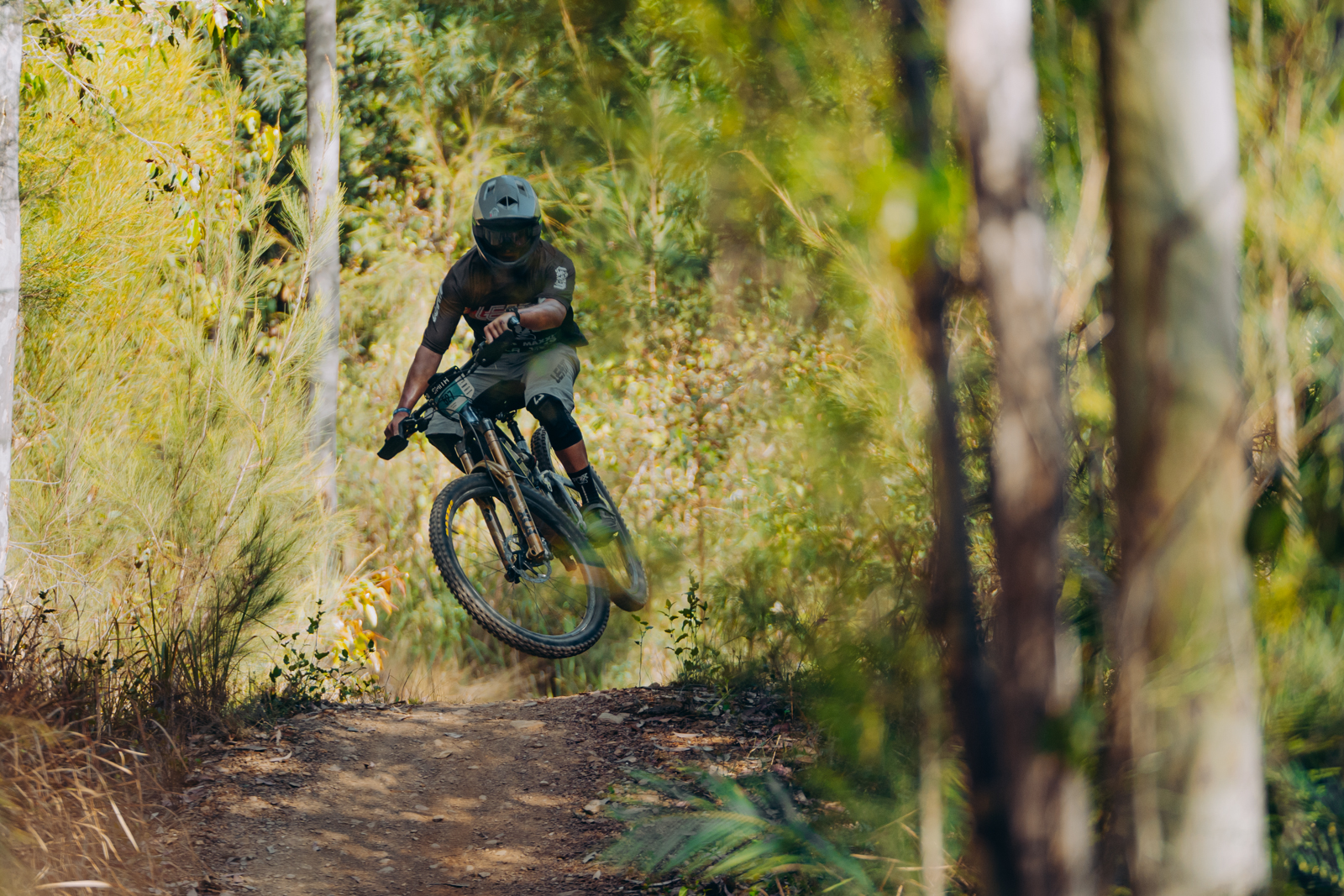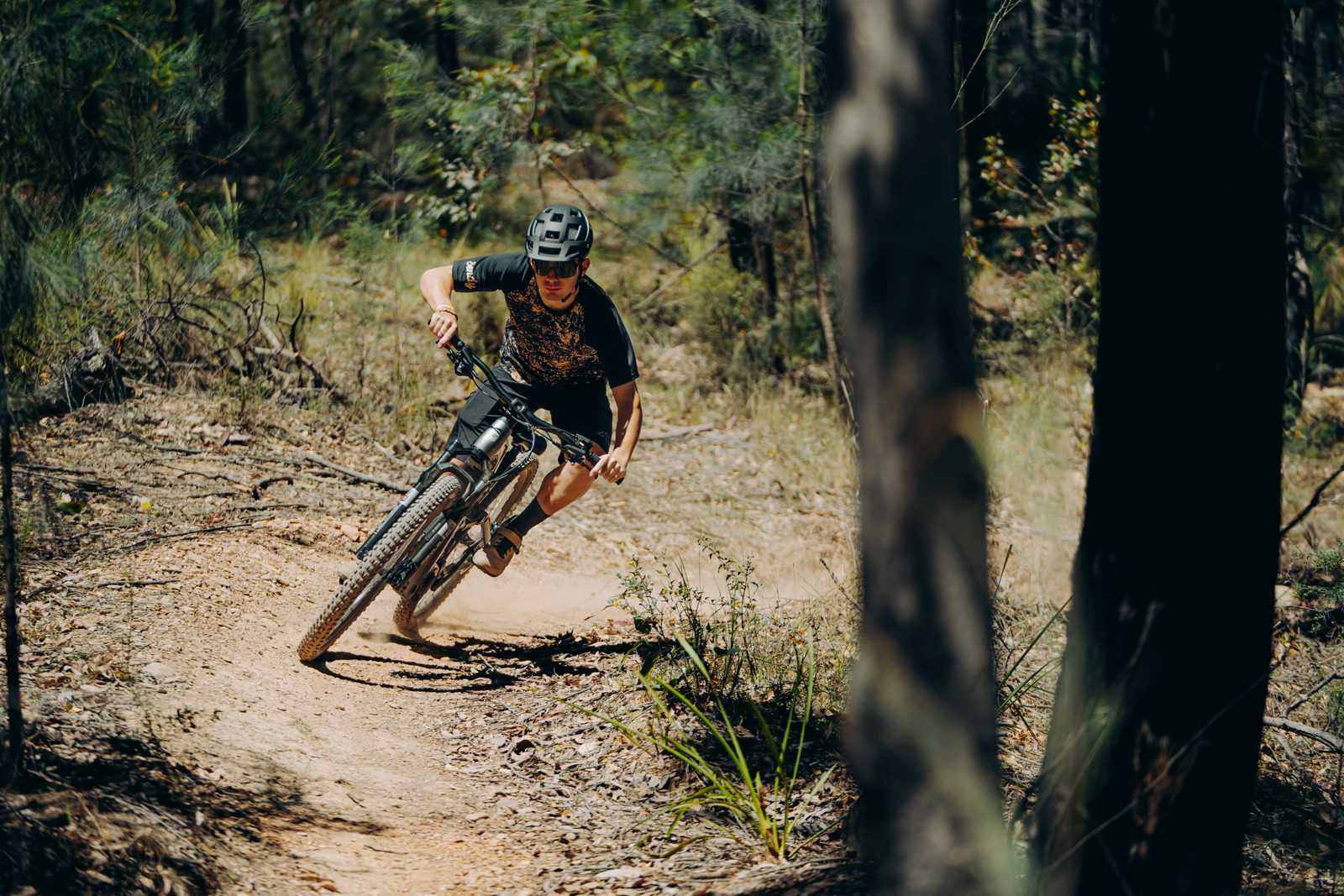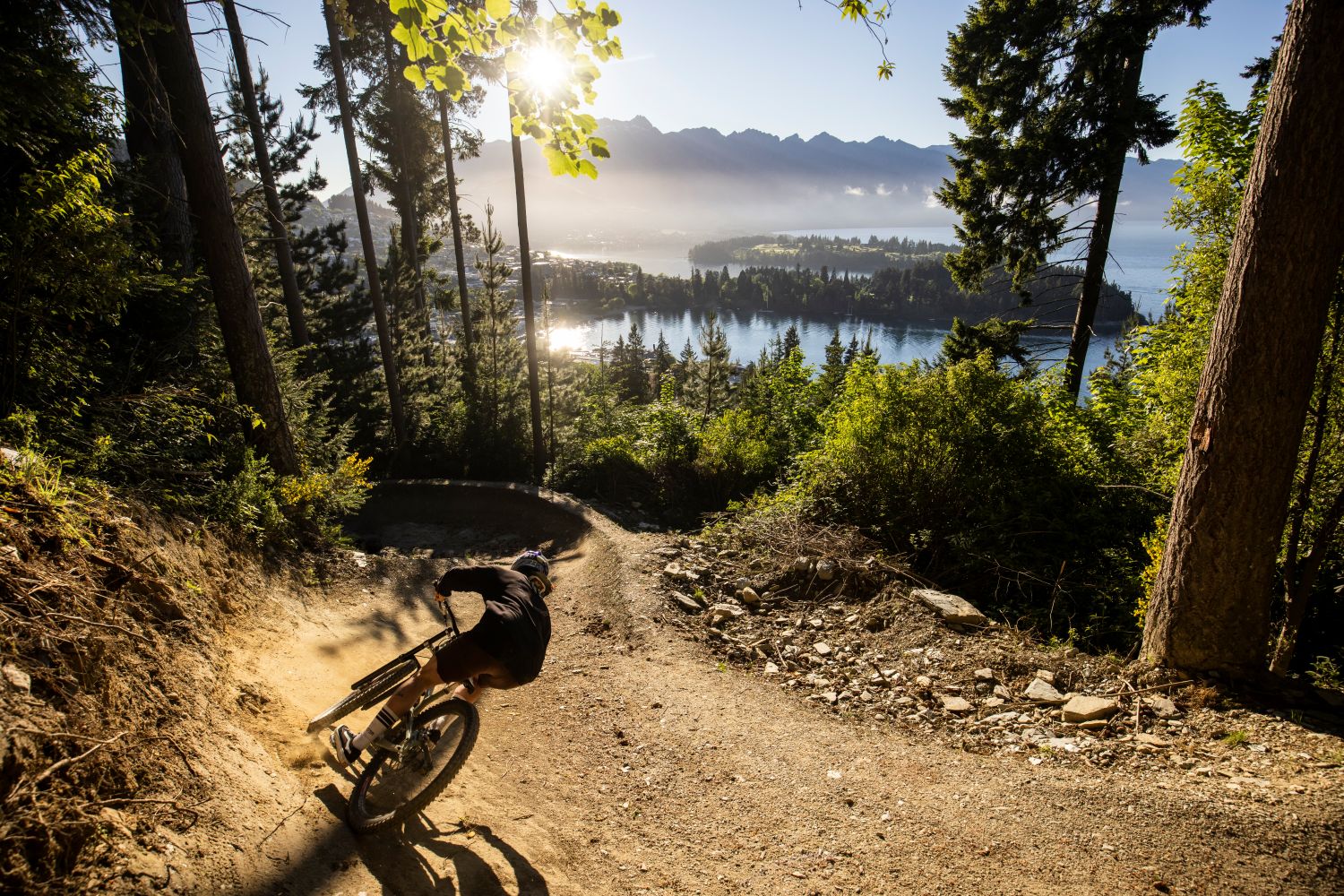TESTED: Devinci Troy Carbon
The 140mm Devinci Troy Carbon is a light and efficient ‘All-Mountain’ bike that aims to achieve much of the rough’n’tumble capability of the more gravity oriented Spartan, but is it under-gunned?
Words: Adam MacBeth Photos: Tim Bardsley-Smith
Unless you’ve spent a fair bit of time in Whistler, or other Canadian trail parks, you may not have seen a whole lot of Devincis getting around. The Quebec based company has been producing mountain bikes for coming up on 25 years, and have enjoyed a solid amount of International press most notably in World Cup downhill under the late Steve Smith and the current Australian National Series champ Graeme Mudd. In 2016 their factory sponsored team placed fourth in the Enduro World Series aboard the hard-hitting 165mm Spartan model.
The 140mm Devinci Troy Carbon falls into the highly contested ‘All-Mountain’ category that aims to achieve much of the rough’n’tumble capability of the more gravity oriented Spartan while still being light and efficient enough for longer days with a bunch more up.
INITIAL IMPRESSIONS
It’s easy to see that the Troy has some bigger brothers capable of pushing very hard. The oversized square section down and top tubes meet in a voluminous and stiff looking head tube junction and the bottom bracket area is similarly robust in appearance. Equally as beefy are the carbon seat stays that meet the swing link of the suspension system, with the Troy decal flowing appealingly and seamlessly along the two. There’s ample internal cable routing for derailleurs, brake and dropper post and it’s nice to see a frame that doesn’t assume North American right-to-rear braking, and allows the rear brake line to run smoothly around to the right side of the head tube. I don’t hate many things but I do hate having to run a rear brake line in a horrible way, and often creating a bunch of frame rub, because a bike manufacturer didn’t think to add just one more hole.
The Troy features the Split Pivot suspension design, engineered by Dave Weagel. Yup, same guy that pioneered the much earlier design aptly named DW and used extensively throughout the industry by the likes or Pivot, Turner and Ibis. The newer Split Pivot system differs in that it is essentially a single pivot design, with the addition of a concentric pivot that encases the rear axle. Weagle’s claim is that Split Pivot allows bicycle manufacturers to tune the pedal and brake efficiencies of their designs through main pivot location and linkage design and that the system will ride as planned without reliance on complex damping or pedal platform in rear shocks.
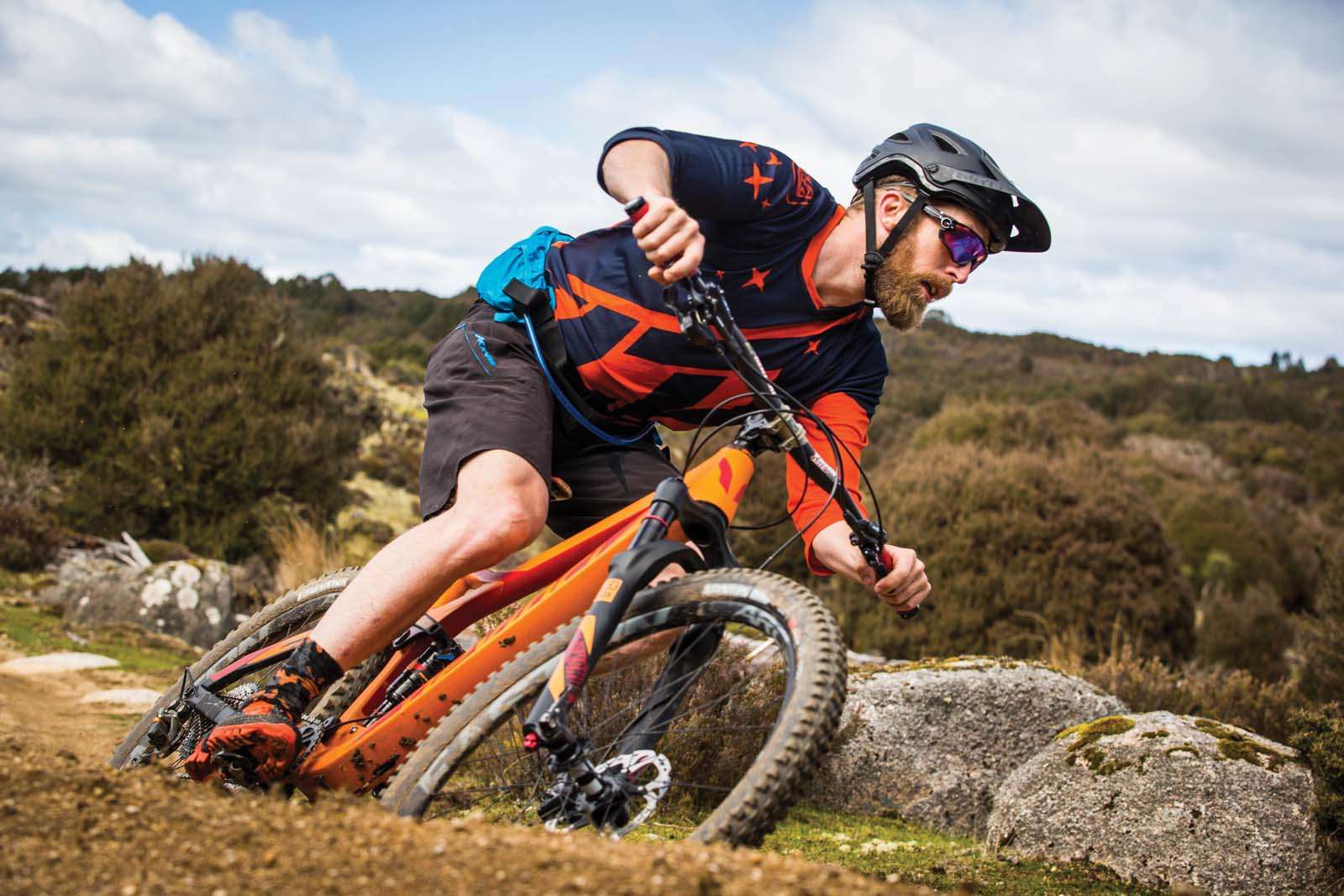
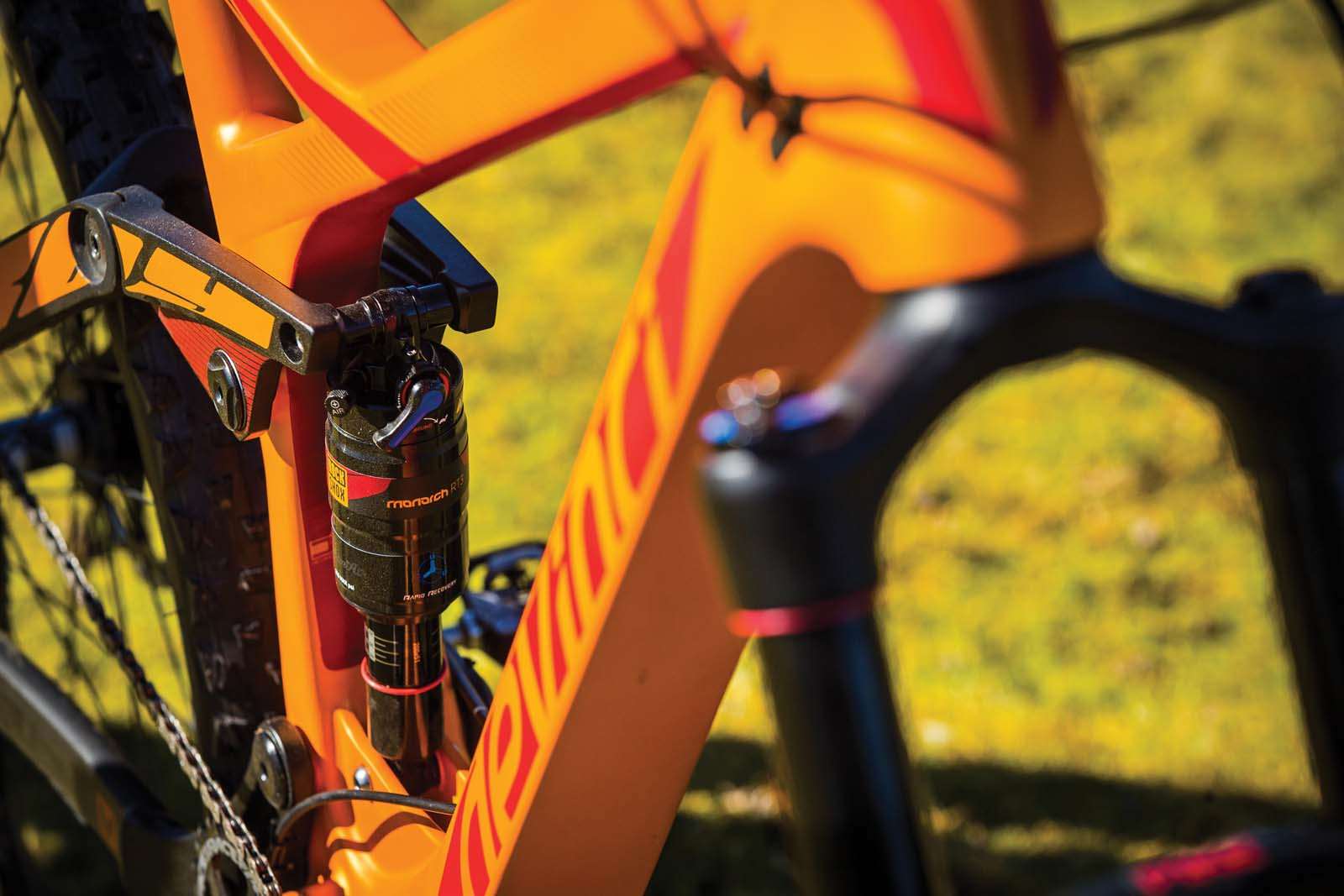
Our Troy was custom built by the Australian importer for our test, but all components other than the Renthal bar and stem are available as standard options from your Devinci dealer. The ever impressive Pike RCT3 from RockShox delivers 150mm of travel up front, while the matching Monarch Debonair RT3 helps the DW Split Pivot rear end achieve its 140mm. I have never really been a fan of RockShox rear shocks, finding them to be less plush and not as well damped as some other options, and was interested to get a feel for it in the Troy. Shimano XT, with an XTR rear derailleur and RaceFace Turbine crank takes care of getting the rear wheel spinning and slowing them down again is left to a matching XT brake set. A pair of Boost spaced DT Swiss 350 hubs were joined to the Easton ARC rims with DT Competition spokes. RaceFace have recently taken over Easton’s mountain bike division, so future versions of the Troy (and many other bikes industry wide) will come with the ARC rims branded as RaceFace.
ON THE TRAIL WITH TROY
Our Large test bike features a 626mm top tube, which fit me like a glove with the 50mm Apex stem and 780mm wide bar. The wide bar, combined with the visual width of the top tube when on the bike gave the feeling of a much more capable bike that the Troy’s all-mountain label. The Troy features the ability to run in a high or low setting, altering bottom bracket height and changing the head angle by half a degree. For the duration of the test I ran the Troy in low mode, making the head angle 67 degrees. Running in low mode also lowers the bottom bracket to 338mm which has stability written all over it, though riders yet to master their pedalling technique in rough terrain may find they strike a pedal occasionally and opt for the extra 5mm offered in the high setting with the slightly steeper head angle.
Climbing from the trail head it was immediately noticeable that the pedalling of Troy was independent of rear suspension movement, and staying seated resulted in no noticeable bob. The long front centre helped the front wheel stay planted, even on some steeper, more technical sections and the low weight made accelerating a little to clear obstacles a breeze. I am more of a standing climber though, and can occasionally find myself frustrated by systems that move around a bit once you get out of the saddle and move your weight around. The Troy remained steadfast and as long as you keep both wheels weighted the bike maintains traction nicely.
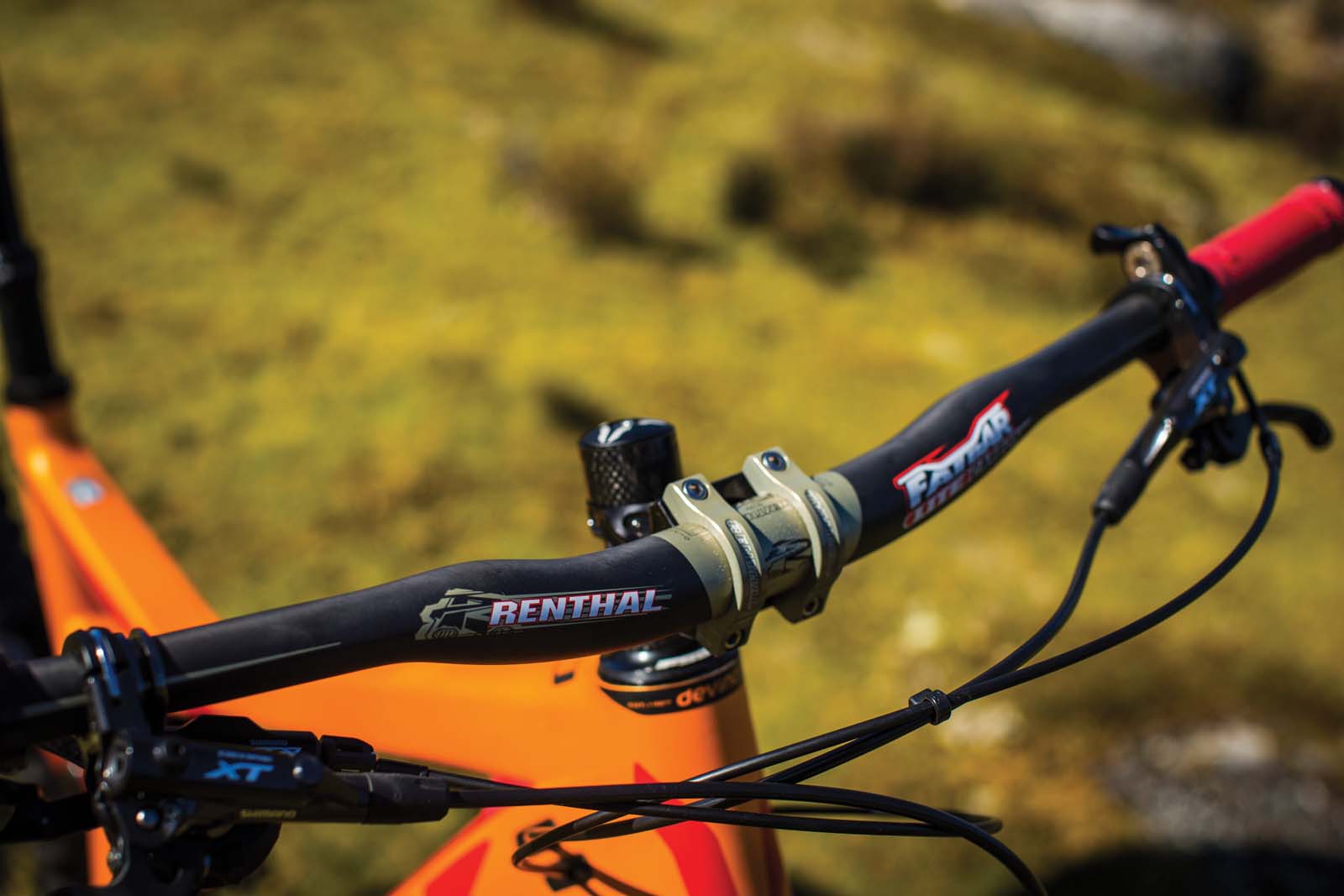
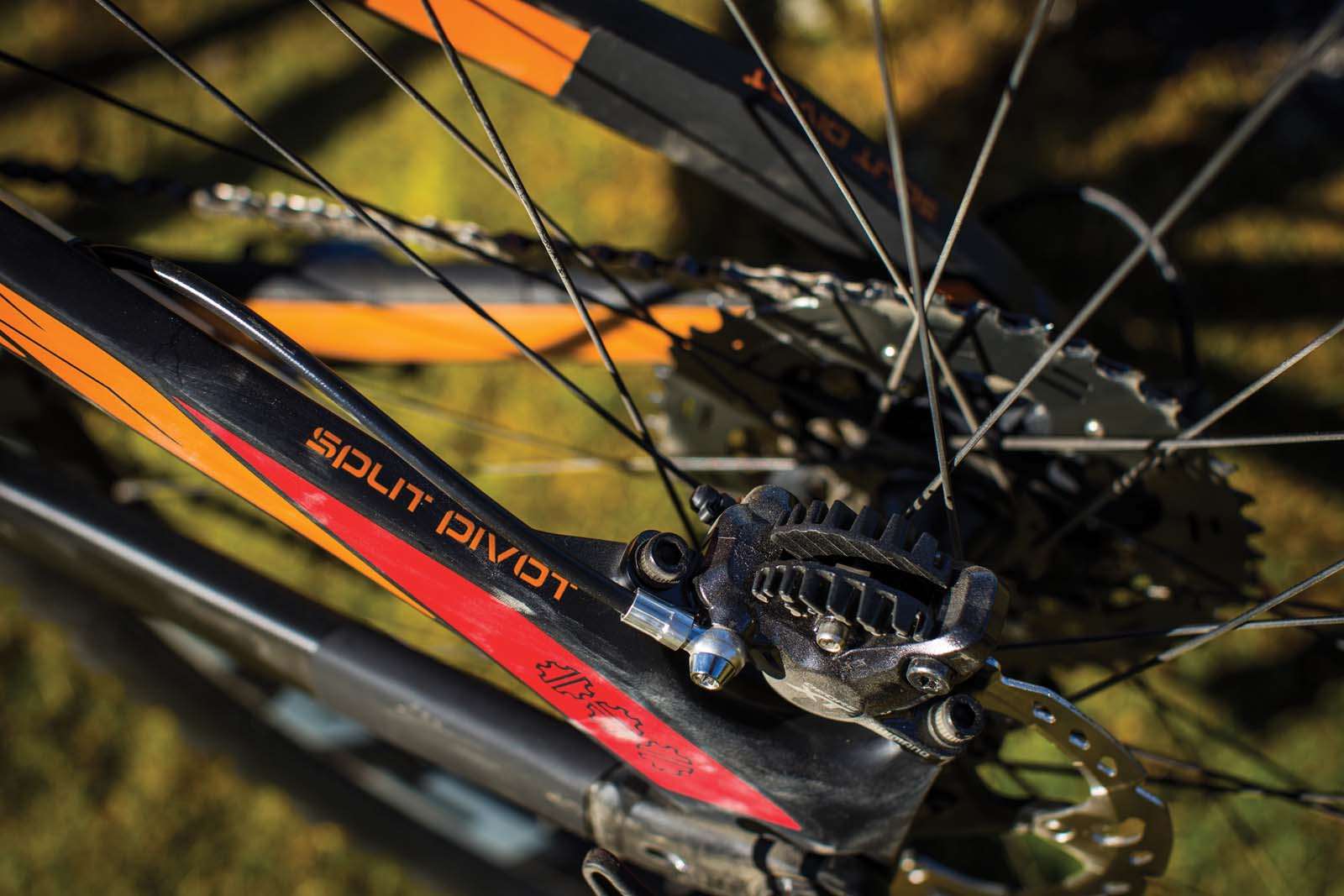
Once we got onto some faster, gnarlier stuff the brand’s gravity oriented heritage became apparent. Cornering on the Troy is super predictable and very little rider input is required to keep the bike on its line, or change to another one. The aforementioned large head tube junction is STIFF and I was unable to find anything rough enough, that I was still comfortable to ride at speed, that was able to shake the Troy off line. I had come into this test wondering if I’d find myself longing for the longer travel Spartan model, but this was never the case. Similarly the rear end seemed to track perfectly through the rough sections, the wheel staying planted and where it was supposed to resulting in loads of cornering and braking traction. There’s a lot of ‘ifs and buts’ in the industry surrounding the introduction of Boost spacing but if it means bikes are going to ride like this, then it can stay. With chain stays at 426mm in the low setting, floating the front wheel off drops or hopping trail obstacles was a piece of cake, made easier by the Troy’s lack of heft, and helped a lot when quickly reacting to situations that may otherwise have ended in tears.
I did find the Monarch rear shock a little difficult to get set up exactly to my liking, and felt like I was always chasing that last 5% of rebound adjustment. At 76kg I tend to fall in a spot where most rear shocks will set up easily without resorting to volume spacers or re-valving, but I just could not nail a sweet spot on the Monarch and ended up having it custom tuned by the team at Mountain Bike Suspension Centre in Sydney. This made a world of difference, and I was able to get the rebound especially dialled right in which only enhanced the ride experience detailed above.
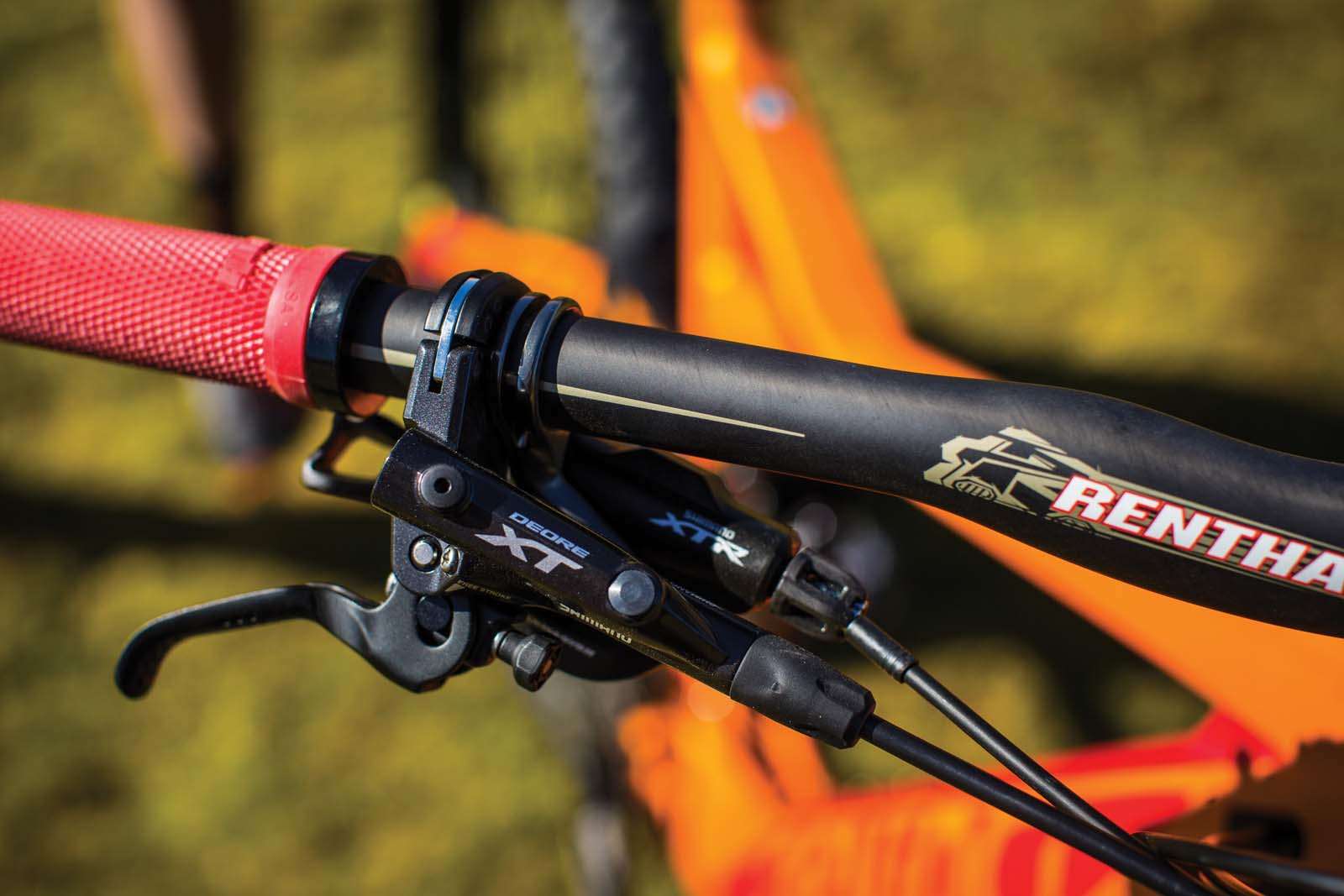
OUR TAKE
Fair enough, the Troy is maybe a little under gunned if you ride the steeper, longer descents that Canada is known for, but for Australian conditions it’s pretty great. Whether you’re just heading to the local for a couple of hours, or heading to Buller or Derby for a weekend of exploring, there’s very little that will get in the Troy’s way. Some riders will need to spend a little more time with their Devinci dealer getting the rear shock dialled but even so the Troy is worth checking out. The Troy Carbon starts at $6990, and there’s also a Canadian made aluminium option that kicks off at $5490.
| Devinci Troy Carbon | |
| RRP | $8290 |
| Weight | 12.4kg |
| Distributor | rowneysports.com |
